Freeze individual portions
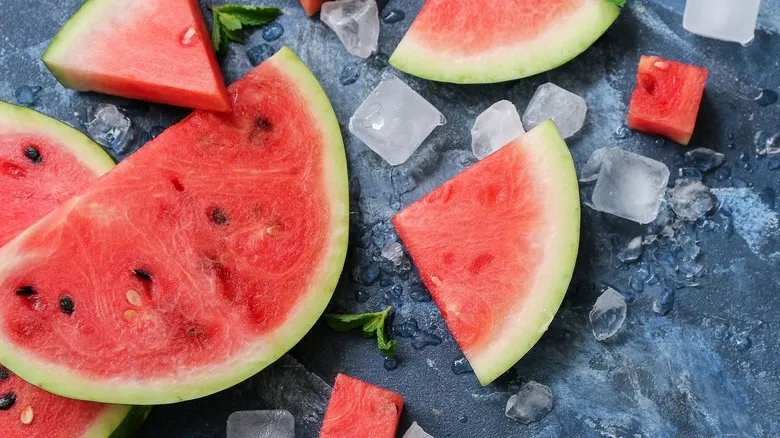
If you have a surplus of watermelon and are short on time or inspiration, you can easily freeze it for later use. This not only helps you preserve leftover watermelon but also provides convenient options for incorporating frozen pieces into smoothies, slushies, or other refreshing treats. Simply cut the watermelon into chunks and place them in the freezer. To prevent them from sticking together, flash-freeze the pieces on a baking sheet before transferring them to a bag or a freezer-safe container. This way, you can easily grab a few pieces at a time for smoothies, chilled soups, or other tasty recipes.
Just remember to slice the watermelon into wedges, chunks, or cubes before freezing. Avoid placing a whole watermelon in the freezer, as it takes up a lot of space and could potentially burst. This occurs because water expands when it freezes, and watermelon has a high water content. As it expands, it may exceed the capacity of the rind, resulting in a messy explosion and leaving you without any watermelon to enjoy. So, be sure to cut it into manageable pieces before freezing!
Throw together a summer salad
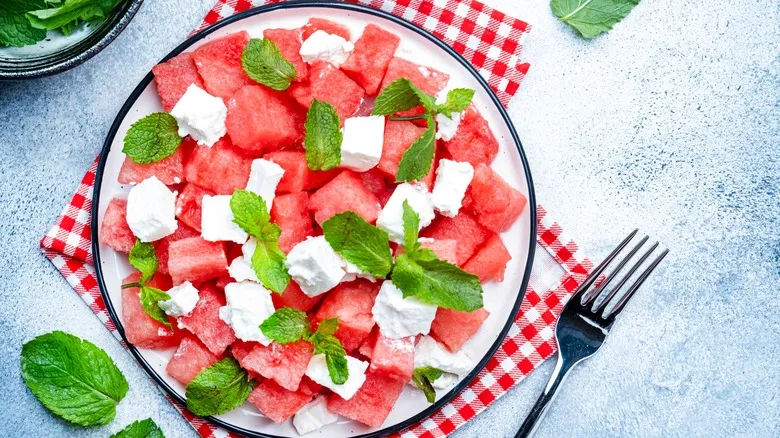
Watermelon salad is an excellent way to utilize the fruit within a day or two after cutting. You can either place it on top of greens like zesty arugula or let the watermelon be the foundation of the salad. Fresh watermelon can be stored in the refrigerator for up to five days, so feel free to cut extra if you plan to use it within that period. Its high water content makes it a refreshing addition to salads. Just be mindful of the texture and consider using less dressing to prevent soggy greens. If you prefer the flavor without the texture, you can also mash or puree the watermelon to create a salad dressing.
For a taste of summer, incorporate cubed watermelon that blends well with your other salad ingredients, keeping the size in mind. Watermelon brings a sweet element to salads and pairs beautifully with salty feta cheese and crunchy cucumber. This delightful side dish works well because the sweetness of the watermelon is amplified by combining it with other flavors, such as the sharpness of red onion, the citrusy notes of lime juice, and the saltiness of feta cheese. A dressing made from lime, honey, and ginger adds a delicious touch to any fruit salad, particularly complementing the sweet flavor of watermelon.
Grill for maximum sweetness

Try Ree Drummond's recipe for grilled watermelon to achieve a delicious caramelization on the fruit's exterior. Grilled watermelon can be enjoyed similarly to fresh fruit, but it offers a slightly richer flavor and a firmer texture. Depending on your grilling technique, the watermelon may take on a subtle smokiness and develop a lovely char that adds a satisfying crispy texture. To simplify the process, keep the watermelon in wedges or large slices to prevent it from slipping through the grill grates. Use a paper towel to soak up any excess juice from the surface, then place the pieces on a high-heat grill for a few minutes on each side. It doesn't take long to achieve that caramelized exterior, which is the goal for this delightful treat.
If you want to enhance the flavor, consider adding seasonings and spices to the watermelon before grilling. Salt, paprika, and chili powder each bring their own unique twist. Salt enhances the fruit's natural sweetness, while paprika and chili powder introduce a smoky, spicy kick. A light spritz of fresh lime or orange juice can keep the flavor vibrant and refreshing. Once the watermelon is finished grilling, you can enjoy it as is or chop it up for use in other recipes that require cubed watermelon, like salads.
Make watermelon soup
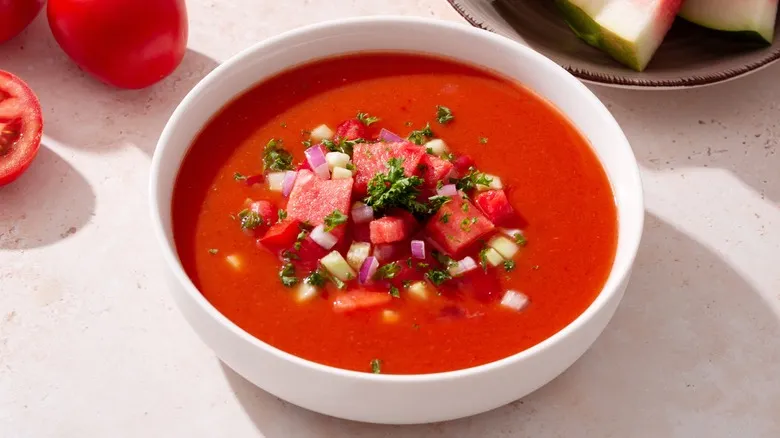
Watermelon makes a delightful complement to a chilled gazpacho soup. This refreshing dish is especially favored during the warm summer months when watermelon is at its peak, so seek out the freshest melon for optimal taste and texture. Tyler Florence's recipe includes 2 cups of diced watermelon, along with red onion, cucumber, serrano chili, and, of course, a large tomato. Although this cold soup dates back to the 8th century, it wasn't until much later that tomato-based gazpacho became a fundamental part of Andalusian cuisine in Spain. Today, it stands as one of the region's most celebrated culinary traditions and a beloved summer dish that is both refreshing and economical.
To prepare gazpacho, blend your watermelon with the other ingredients until the mixture is smooth and serve it chilled. Since no cooking is required, it’s an ideal choice for hot summer days when you want to avoid using the oven. Be sure to set aside a few watermelon pieces for a lovely garnish on top. Feta cheese, diced cucumber, and dill also make excellent additions that enhance the soup's flavors.
Juice overripe watermelon
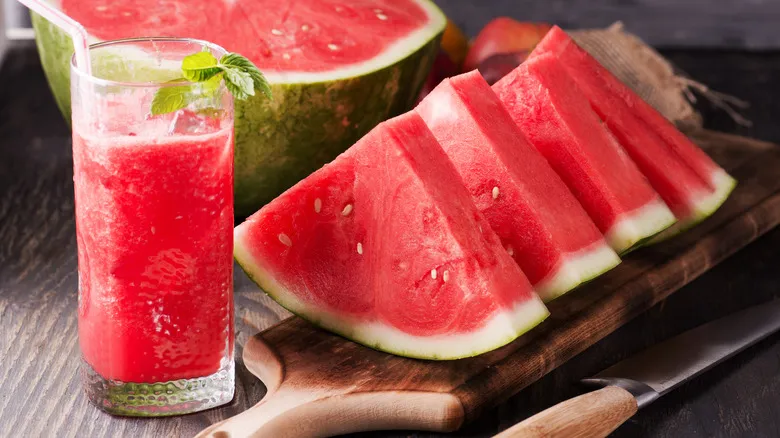
If you've been savoring your watermelon for a few days and it's starting to soften, consider blending it with other fruits to create a refreshing watermelon juice. Avoid using watermelon that has spoiled, but fruit that is slightly overripe can still work well. In this case, texture is less of a concern, and the fruit's high water content is ideal for juicing. You can choose between a juicer or a blender based on your desired consistency and the other fruits you plan to include. A juicer will extract the liquid, resulting in a smooth drink, while a blender will incorporate the fruit's flesh, creating a thicker beverage with more fiber. Since watermelon is naturally high in water, the difference in texture between the two methods is less pronounced than with other fiber-rich fruits. If you prefer a smoother juice, you can strain it to remove some of the pulp.
To enhance your watermelon juice, consider adding extra flavors like lime juice, though it’s delicious on its own as well. For a refreshing twist, mix in sparkling water, champagne, or a clear spirit to create a mocktail or cocktail that captures the essence of summer in a glass.
Enjoy agua fresca
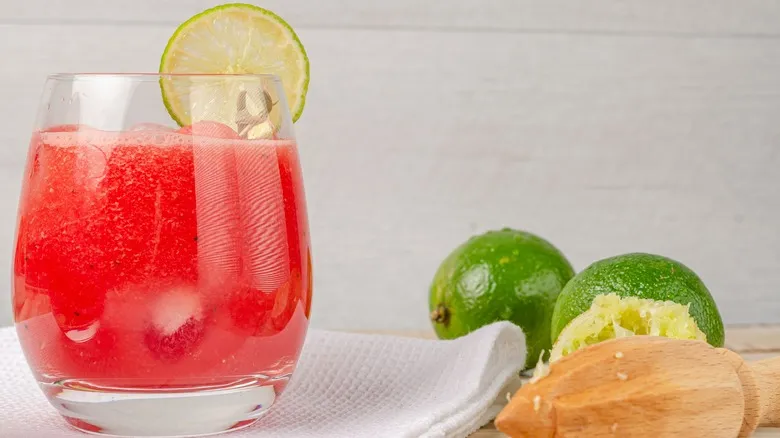
With watermelon as the main ingredient, you'll be crafting these delightful beverages from Mexico all summer long. Agua frescas, which means "fresh water," combine fruit and water to create a refreshing drink served over ice. Their origins trace back to the Aztec culture, where muddled fruit drinks made with fresh ingredients were popular. These beverages are typically lighter than pure watermelon juice due to the added water. Sugar is also included, which can be mixed directly into the watermelon-water blend or dissolved in water to make a simple syrup for a smoother consistency.
Lime and mint enhance the flavor of the drink. While agua fresca traditionally calls for muddled mint, you can also use fresh leaves as a garnish. Incorporate lime juice into the chilled watermelon-water mixture before adding your sugar, or muddle a slice of lime with the mint. A lime wedge on the rim of your glass adds a fun touch and hints at the flavors within.
Start with a breakfast bowl
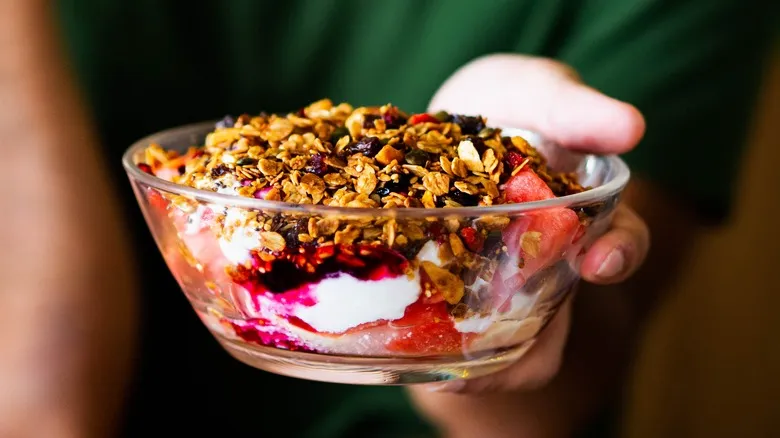
Start your adventures with a refreshing watermelon breakfast bowl, packed with berries, chia seeds, and your favorite toppings. It’s an ideal way to kick off your day, providing a wealth of nutrition from the watermelon and its accompaniments. Watermelon is rich in Vitamin A, Vitamin B6, and Vitamin C. Due to its high water content, you won’t need to add much liquid, though juice can enhance the flavor and boost the vitamin content—just keep in mind it will also increase the sugar level in your bowl. For an adult twist, mix in brewed hibiscus tea, agave, and tequila, which Jim Meehan refers to as agua fuerte.
You can use cubed or balled watermelon since it will be blended. This is a fantastic way to utilize leftover watermelon pieces of any size. Cutting it into smaller chunks will help it blend more quickly and achieve a smooth consistency. If necessary, you can strain out any seeds. For a more layered flavor, incorporate additional berries, a handful of chia seeds to thicken the blend, or coconut for added texture. You can either blend these ingredients in or sprinkle them on top. Crunchy toppings like granola and nuts also make a delightful addition.
Try icy sorbet
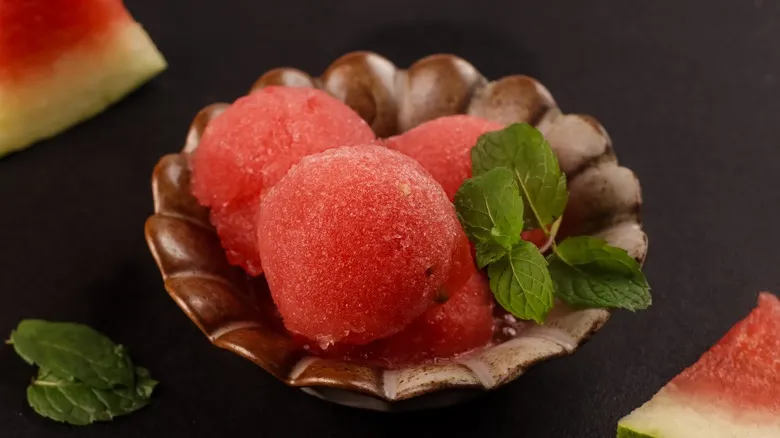
Watermelon is perfect for creating a delicious frozen sorbet. Sorbet has a texture similar to ice cream but is dairy-free and has a slightly icy feel. To make the base, puree the watermelon and combine it with a simple syrup, ensuring the sugar is fully dissolved for the smoothest consistency. Using an ice cream maker simplifies the process, allowing you to freeze the mixture and churn it on the sorbet setting. This typically takes about 20 minutes for a full batch. If you don’t have an ice cream maker, you can blend frozen watermelon chunks with a few tablespoons of citrus juice, like lime, in a high-powered blender and transfer it to a freezer-safe container.
You can enhance the base with additional flavors, such as herbs like mint or basil. Just be sure to muddle them thoroughly and strain out any solids to maintain a smooth texture. Feel free to top your finished sorbet with other fruits or toppings for added flair.
Puree for watermelon jam
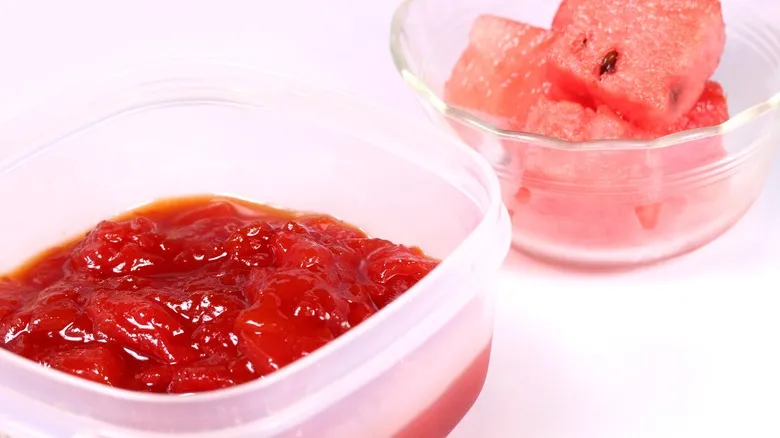
If you're looking to make the most of your leftover watermelon, particularly as it nears overripe, transforming it into watermelon jam is an excellent choice. The canning process allows you to savor the taste of watermelon even during the fall and winter months. While you'll need some specific tools, such as canning jars, the overall procedure is quite simple.
To create a delicious watermelon jam that is thick enough to spread on toast or biscuits, it's essential to eliminate excess moisture. The high water content in watermelon, which makes it perfect for juices and smoothies, can hinder the thickening process for jam. Unlike other fruit jams, avoid adding any extra liquid when making watermelon jam, as the fruit already contains plenty of moisture. Additionally, you'll require more pectin than you would for other jam recipes. The ingredients are minimal, but pectin is crucial for achieving the desired gel consistency. Simply combine pureed watermelon, sugar, lemon juice, and pectin in a pot, bring it to a boil, and then allow it to cool to set.
Whip up watermelon syrup
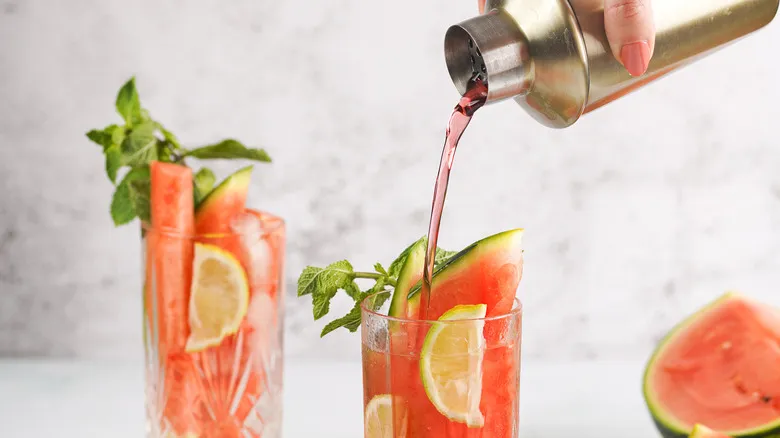
If you're looking for a thinner option, this method utilizes the water content of watermelon and enhances the flavors with added sugar to create a delightful watermelon syrup, perfect for drizzling over pancakes or ice cream. Unlike watermelon jam, which uses pectin to achieve a gel-like texture, watermelon syrup is made by reducing watermelon puree to thicken it. It's incredibly easy to prepare and only requires some sugar mixed into regular watermelon puree. You can strain the puree beforehand to eliminate seeds and larger pieces of flesh, but it's just as effective without this step. If you choose not to strain it, you'll end up with a syrup that has more pulp, so think about your desired outcome before skipping this process. Simply dissolve the sugar in the puree on the stove and let it simmer until it reaches a thicker, syrupy consistency. Start checking it after about an hour and remove it from the heat once it reaches your desired thickness, keeping in mind that it will continue to thicken as it cools. You can also mix it with soda water or clear spirits to create your own watermelon-flavored beverages. It adds a refreshing, summery taste to cakes like angel food and sponge cake as well.
Pickled watermelon
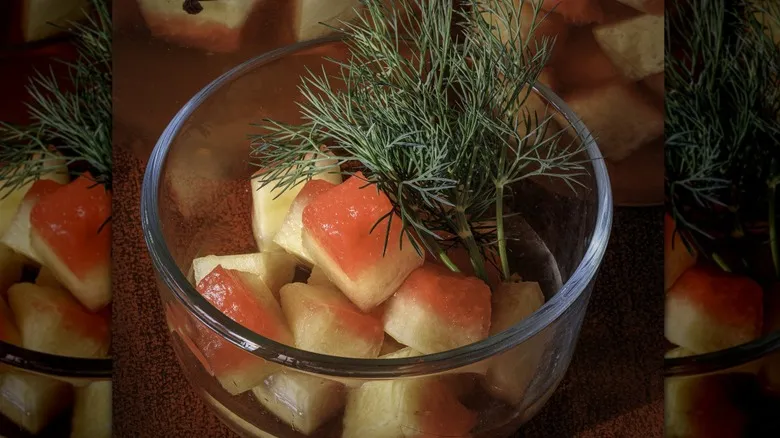
Once you've savored your watermelon, don't toss out the leftover rinds! Instead, transform them into delightful pickled watermelon rinds. This clever method turns the often-overlooked part of the watermelon into a tasty treat that you can relish for weeks after the fresh fruit is gone. These pickles can be stored in the refrigerator for up to a month, but remember, they must be kept chilled.
To prepare pickled watermelon rind, start by removing the white inner portion of the rind, which lies between the green outer skin and the pink flesh of the melon. Cut the rind into cubes or spears that will fit into your chosen pickling jar. As you bring the vinegar and spices to a boil, place the rind pieces into the jar. Once the brine is ready, pour it into the jar until it's full and the rind is completely submerged.
For the brine, you can mix pickling spices with vinegar and sugar. Feel free to experiment with different flavor profiles, but Alton Brown's recipe suggests using ginger, salt, red pepper flakes, allspice, and star anise. If you like a bit of heat, consider adding slices of jalapeño to the jar along with the watermelon rind, resulting in delicious pickled jalapeños that make a great addition to salads.
Make refreshing slushies (for everyone or just the adults)
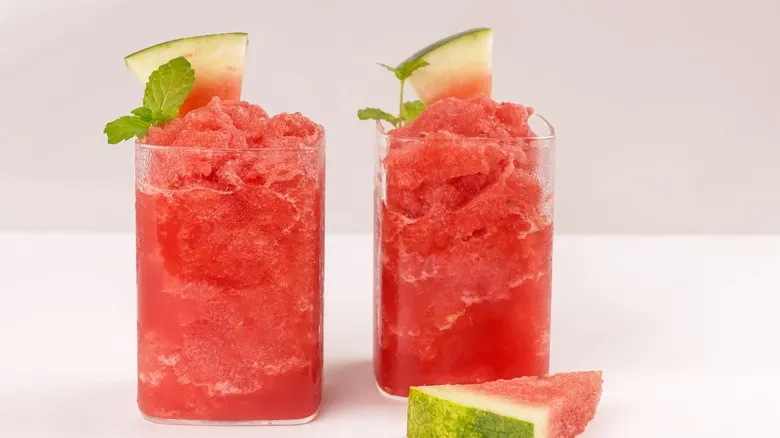
You can utilize leftover watermelon throughout the year to create slushies (with or without alcohol) by freezing the watermelon pieces and blending them. Before freezing, be sure to remove as many seeds as possible, as you won’t have the chance to strain the mixture once the chunks are frozen. Spread the pieces on a baking sheet to freeze them individually before transferring them to a freezer-safe container. This method prevents them from clumping together, allowing you to take out only the amount you need. For the slushies, mix about 4 parts watermelon with 1 part liquid of your choice. For a sweeter and more flavorful option, consider using fruit juice, or for an alcoholic twist, try tequila, vodka, or rum.
A high-powered blender works well for making slushies, or you can use an ice cream maker that has a slushie or frozen drink setting.
Recommended

Got Cloudy Wine Glasses? Reach For The Baking Soda
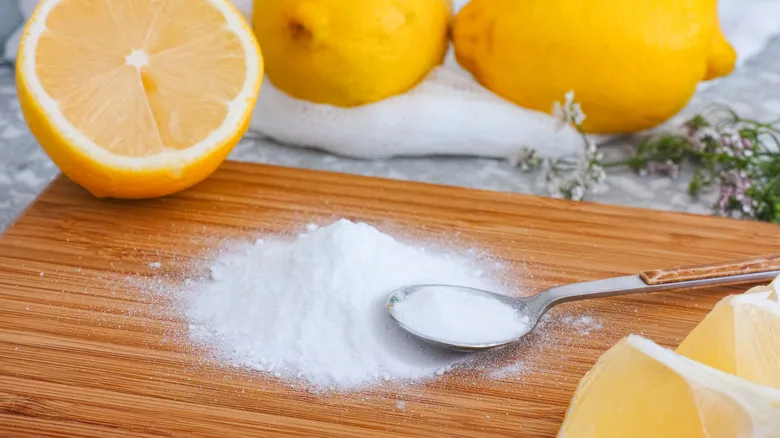
To Best Clean Your Cutting Boards, Reach For Some Baking Soda
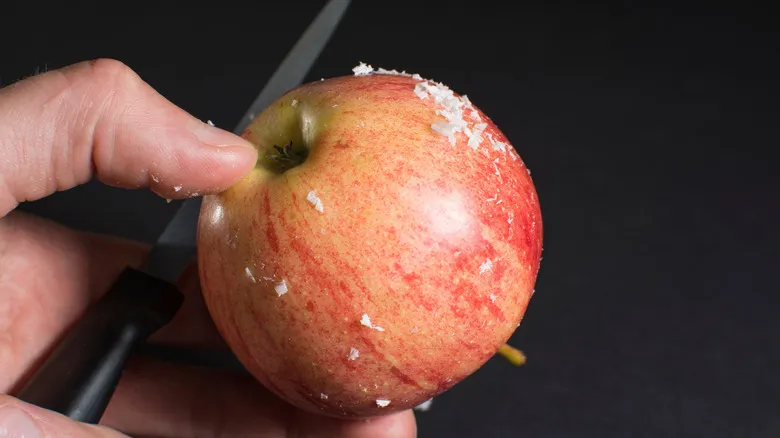
How To Easily Remove Wax From Apples
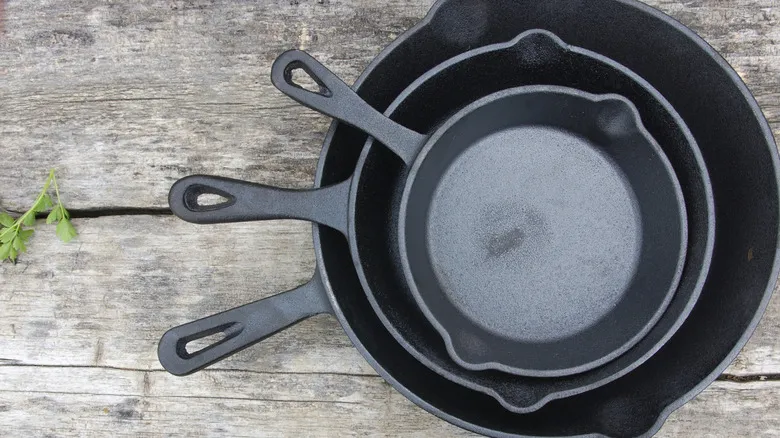
Club Soda Is The Secret To Cleaning Your Prized Cast Iron
Next up

